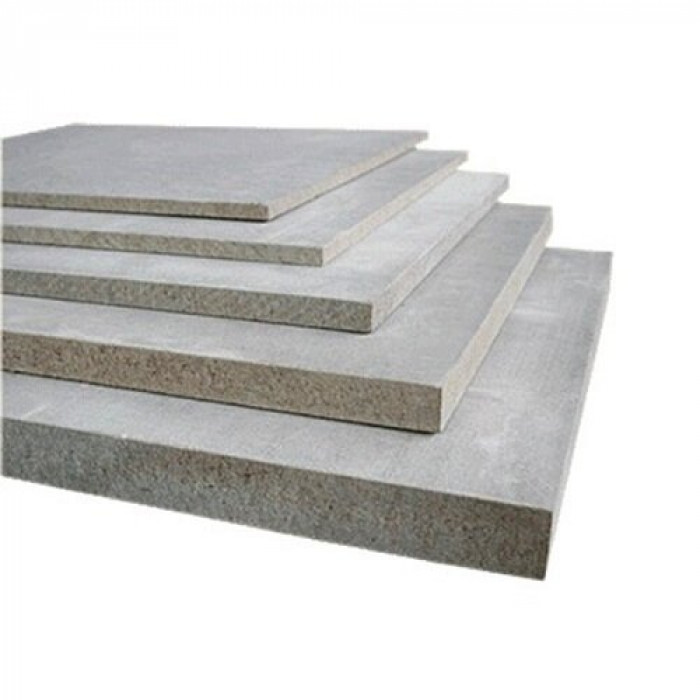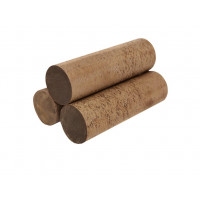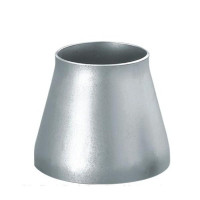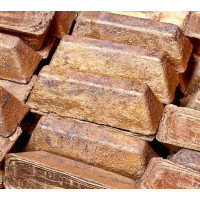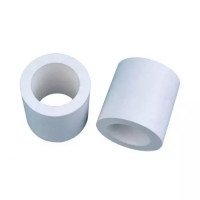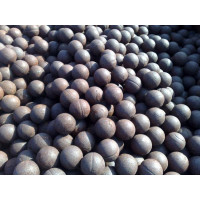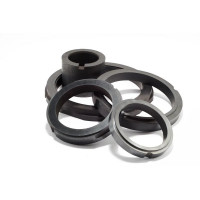Cement particle board thickness 12 mm, 1600x1200 mm - these are universal monolithic slabs with a thickness of 8 to 40 mm with a smooth, hard surface used in “dry installation” technology.
ArmoPlit DSP board belongs to a new universal generation of building materials. Thanks to their high technical and high-quality components, the slabs have a wide range of applications and can facilitate the solution of a number of problems arising in any construction.
The slabs are made by pressing a molded technological mixture consisting of softwood chips, Portland cement, minerals and water.
Advantages of DSP:
environmental and hygienic safety - do not contain formaldehyde resins, phenol, asbestos and other toxic, harmful and dangerous substances;
resistance to rotting, not affected by fungus and mold, resist the effects of termites, insects and rodents;
resistance to gasoline, oils, urea, solutions of acids and alkalis, solutions of disinfectants;
durability (guaranteed service life in building structures is at least 50 years);
high strength and wear resistance;
good sound insulation and thermal properties;
workability similar to wood with higher strength;
fire resistance and fire safety: flammability group: G1 (low-flammable), flammability group: B1 (low-flammable), flame propagation group: RP1 (non-propagating), smoke-generating ability group: D1 (low-smoke-generating), toxicity group of combustion products: T1 (low-hazardous);
resistance to atmospheric influences: thickness swelling of ArmoPlit CBPB in 24 hours is no more than 2%, water absorption in 24 hours is no more than 16%;
suitability for use both inside and outside residential and commercial premises;
a variety of surface finishes: painting, plastering, wallpapering, ceramic tiles, wood, plastic, etc.;
Suitable for use in all climatic regions.
The use of DSP in construction provides reliable internal thermal protection. This building material is perfect for wall cladding in low-rise buildings, special-purpose buildings and rooms with high levels of humidity. The surface of cement bonded particle boards does not require significant processing or finishing. Buildings that have DSP in their finishing can withstand quite severe operating conditions. The physical properties of the material and its incomparable technical characteristics ensure durability, integrity and protection of the interior. The relatively low cost of building materials does not in any way affect its consumer qualities. With the help of cement particle boards you can easily and quickly level walls or the base of the floor; they are also good for rough finishing of a building. DSPs can make any home warm, comfortable and significantly increase its service life.
Cement-bonded particle board (CPB) is a sheet construction and finishing material that is produced by pressing a cement-bonded particle board mixture. It is widely used in construction, as well as in interior and exterior decoration. The main standard is GOST 26816-2016. The dimensions and technical requirements for products set out in this document comply with European standards EN 634-1:1995 (part 1) and EN 634-2:2007 (part 2).
Composition and structure of DSP
By volume
66% - wood shavings;
21% - Portland cement M500;
10% - water;
3% - hydration additives and modifiers.
DSP has 3–4 layers. For internal ones, longer sawdust is used, for external ones - shorter. This heterogeneous structure gives the material strength and elasticity and ensures a smooth surface of the final product.
Characteristics
Dimensions. The slabs are produced in lengths of 2700, 3200 and 3600 mm, widths of 1200 and 1250 mm. Thickness varies from 8 to 40 mm, in increments of 2 mm. It is possible to produce DSPs of other sizes to suit individual customer requirements.
Physical and mechanical parameters.
Density is 1100–1400 kg/m³, which makes cement particle boards the heaviest sheet material.
Thermal conductivity coefficient is 0.26 W/(m K). Temperature resistance (m2 °C/W) - 0.031–0.138 depending on the thickness of the slab (the thicker the slab, the higher the value).
Tensile strength - no less than 0.35–0.40 MPa, bending strength - no less than 7–12.9 MPa, depending on the type and thickness of the DSP.
Humidity is within 6–12%, water absorption per day is no more than 16%.
Frost resistance - at least 50 cycles.
Production technology
Preparation of chips. For the manufacture of CBPB, only aged dry shavings can be used. It is divided into two fractions: small, which goes to the outer layers, and larger (to the inner). The sifted raw materials are treated with sodium, calcium or aluminum salts to fill the capillaries of the wood with minerals and thus reduce its ability to absorb moisture. In addition, processing is carried out to convert soluble sugarss of wood, in its pure form, changing the hardening time of cement into insoluble compounds. The shavings are kept in salt solutions for at least a day.
Preparation of an aqueous solution. Ordinary water cannot be used, because even after treatment with hydration solutions, sugars may remain in the wood, which react with water and reduce the quality of the cement stone. Therefore, the same salts that are used to process chips (sodium silicate, calcium chloride, aluminum sulfate) are added to the water in proportions depending on the degree of pretreatment, wood type, water quality and other factors.
Preparation of the working mixture. Prepared shavings and sawdust are mixed with cement and aqueous solution in concrete mixing plants. In this case, mixing of shavings of different fractions occurs separately, in different BSUs.
Molding. The prepared cement-bonded particle mixture is laid out in three layers on pallets; during the laying process, weighing is carried out to determine the exact amount (if necessary, the mixture is added to the required amount or excess is removed). The pallets are then placed on a vibrating stand to compact, remove air bubbles from the mixture and fill the mold as completely as possible. After compaction, the mixture is pressed to the required thickness.
Temperature treatment. Depending on the technology and equipment, I treat compressed pallet packages with steam at a temperature of +80...+100 °C for 6–16 hours. Such conditions lead to accelerated hydration and hardening of the cement mixture. The dimensions of the plate do not change.
Final processing. The slabs are removed from the molds and sent to buffer storage for subsequent ripening. To do this, the CBPBs are blown with hot air +70…+100 °C. The sheets are then cut to size, sanded and sorted.
It is important to know. Cement particle boards are produced in two categories: TsSP-1 and TsSP-2. Products of the first type have better characteristics: smaller deviation from dimensions (±3.0 mm versus ±5.0), higher bending strength (9.0–12.0 MPa versus 7.0–9.0 MPa), lower roughness (80 and 100 microns), etc.
Advantages of cement bonded particle boards
Environmental Safety. In the production of CBPB, harmless raw materials are used: Portland cement, wood shavings, metal salts. During the manufacturing process, complete mineralization of the components occurs, which makes it impossible for the finished product to emit gases or dust. The material is safe for humans and the environment, including when heated.
Fire safety. DSP does not burn, does not support or propagate combustion, and does not emit toxic fumes and vapors. This allows you to install cement-bonded particle boards in rooms with increased fire safety requirements.
Reliability. DSP is a material that imparts rigidity to the frame, and can be used in multi-storey buildings and in earthquake-prone areas (they have successfully passed the non-departmental examination and the examination of TsNIISK).
Biostability. During the process of converting cement into concrete during the manufacture of CBPB, calcium hydroxide is formed in the mass itself - a natural antiseptic. Thanks to this, mold does not form in the material, and its structure allows it to resist the effects of insects and rodents.
Moisture resistance. The boards do not absorb moisture and, when installed outside, additionally protect the building from atmospheric agents. This also allows the use of DSP for finishing wet rooms. Frost resistance. This property allows the material to be used in server regions - the reduction in bending strength after 50 cycles does not exceed 10%.
Application of DSP
DSPs are used in the construction and reconstruction of residential buildings, as well as various buildings and structures for industrial, civil or agricultural purposes. The most common methods of application are:
Construction of external and internal walls and partitions. DSP, having a thickness of 10–16 mm, is used to create external and internal cladding over metal or wooden sheathing. As a result, a rigid frame is formed, the use of which is also permissible in earthquake-prone areas.
Flat roof installation. DSP is used as a prefabricated screed for roll coverings, including in regions with high snow loads. This allows for smooth laying of the roll coating and no wet processes in the future. The use of DSP makes it possible to organize a serviceable roof.
Installation of permanent formwork. Permanent formwork with elements made of solid-state fiber boards is used in the construction of foundations, walls, attic walls and ceilings in houses of different storeys.
"Floating floor" device. This is a DSP floor laid on a soundproofing layer that does not have rigid connections with the load-bearing part of the floor and other building structures. Its main advantages are high speed of installation, increased sound insulation, as well as moisture and bioresistance.
Floor installation. DSP with a thickness of 12–36 mm can be used both as a subfloor on joists, corrugated sheets, old wooden base, etc., and asas an underlying or leveling layer and even a finished floor (followed by installation of the front covering).
Cladding when creating ventilated facades. Plates 8–12 mm thick are mounted on a wooden or metal sheathing, and thermal insulation materials are laid between them and the wall. This use of CBPB makes it possible to increase the energy efficiency of both old and new buildings.
Interior. In addition to construction and rough finishing, DSPs are also used in finishing, in particular, to create interiors in the loft or high-tech style. Their use can significantly reduce the time it takes to arrange a room. The wood base of the boards allows you to hammer nails into the surface, screw in self-tapping screws, and place interior items on walls finished with DSP. The boards can also be used in damp areas.
What to consider when working with DSP
It should be understood that cement particle board is very different from other wood-composite materials, such as chipboard or fiberboard. The percentage of chips in CBPB does not exceed 25%, so the material in its physical properties and performance characteristics is closer to concrete products than to wood.
Heavy weight. This means that when working with cement bonded particle board, at least two people are required, since it would be very difficult for one person. In addition, the use of DSP, for example, for façade cladding, leads to significant weighting of the structure. Therefore, before starting facing work, you should definitely find out the maximum load for which the load-bearing walls, floors and foundation of the house are designed.
Fragility. Plates require more careful and careful handling than fiberboard and chipboard panels. For example, they should be carried only in a vertical position, perpendicular to the ground, and stored horizontally.
Cutting. When cutting CBPB, a lot of cement dust is released, so all work should be carried out outdoors or in a room with good natural air exchange or exhaust ventilation. When cutting, you must use personal protective equipment, at least a respirator.
Tools. DSP is more cement than wood, since it significantly exceeds it in strength. However, to process it, an almost similar tool is used, but its cutting surfaces must be made of hard alloy. DSP is cut, milled, sanded and drilled.
Fasteners To install the DSP, nails or self-tapping screws are used. For the latter, holes are pre-drilled with a slightly larger diameter than the fasteners. This is done to prevent screwing tightly into the slab and reduce the likelihood of chipping or cracking. All types of connecting elements must have an anti-corrosion surface. The galvanized coating prevents corrosion, thereby protecting the painted surface of the DSP from rust.
From us you can buy Cement particle board 12 mm, 1600x1200 mm at the best price in Ukraine. A wide range of products allows us to quickly and efficiently fulfill any orders, helping to complete any construction work on time.
No questions about this product, be the first and ask your question.

